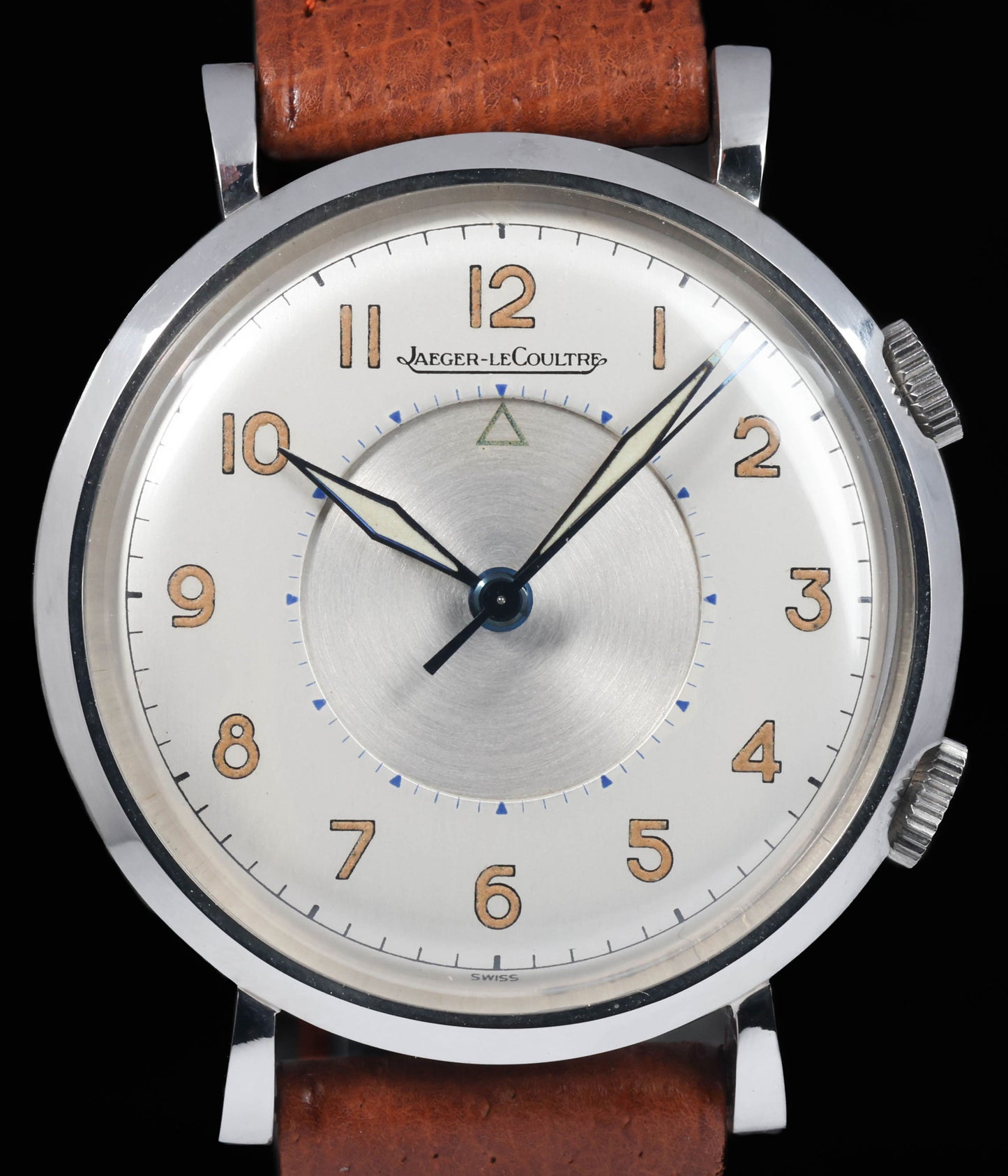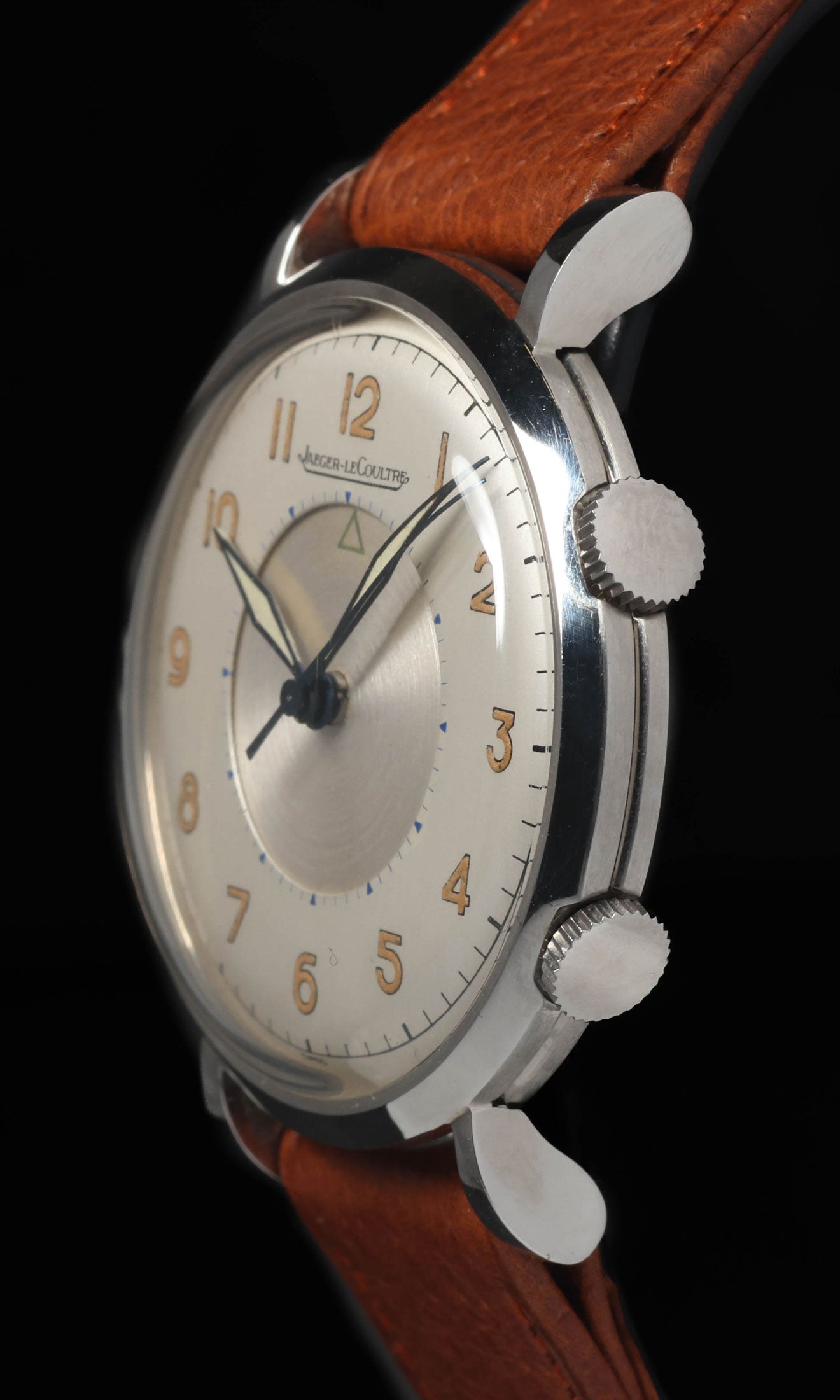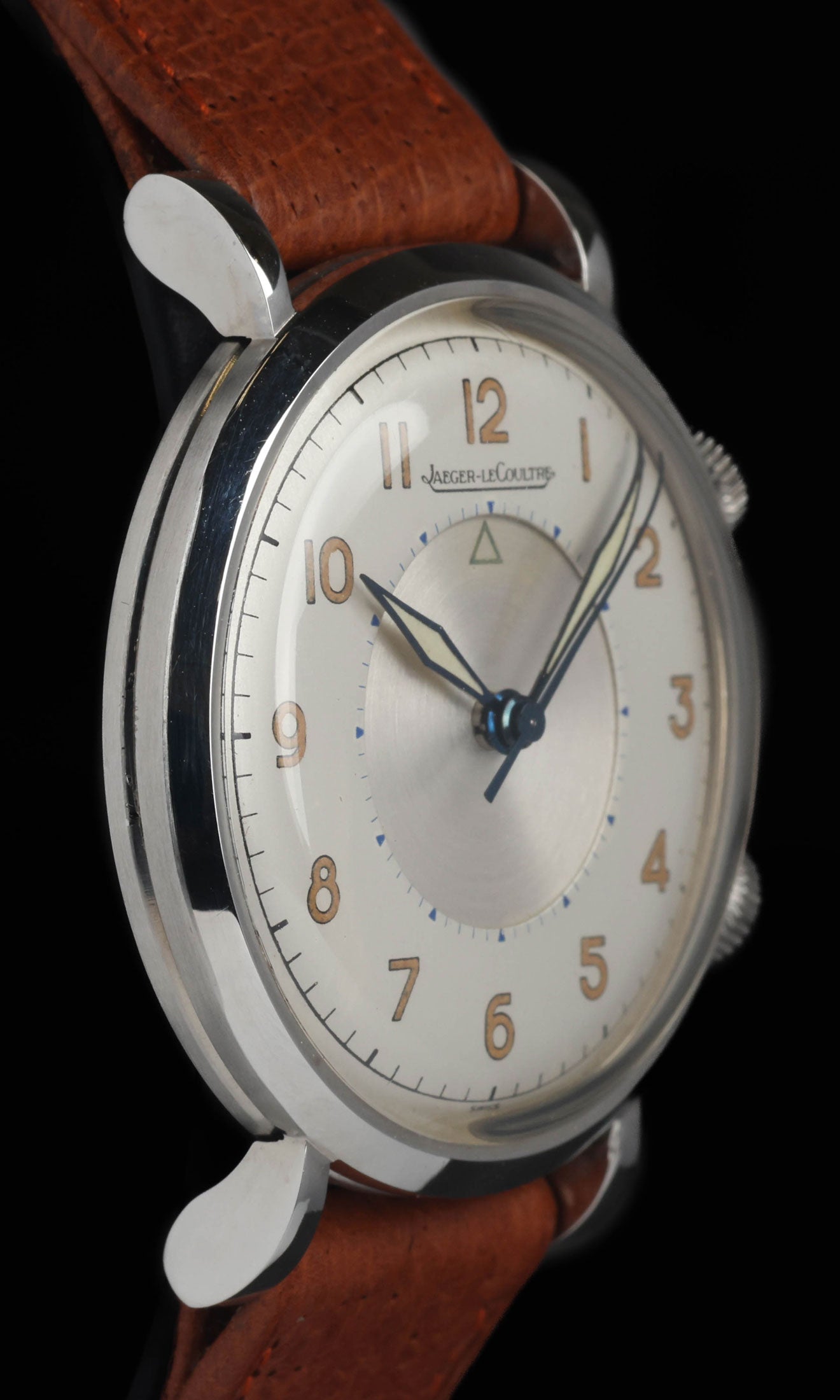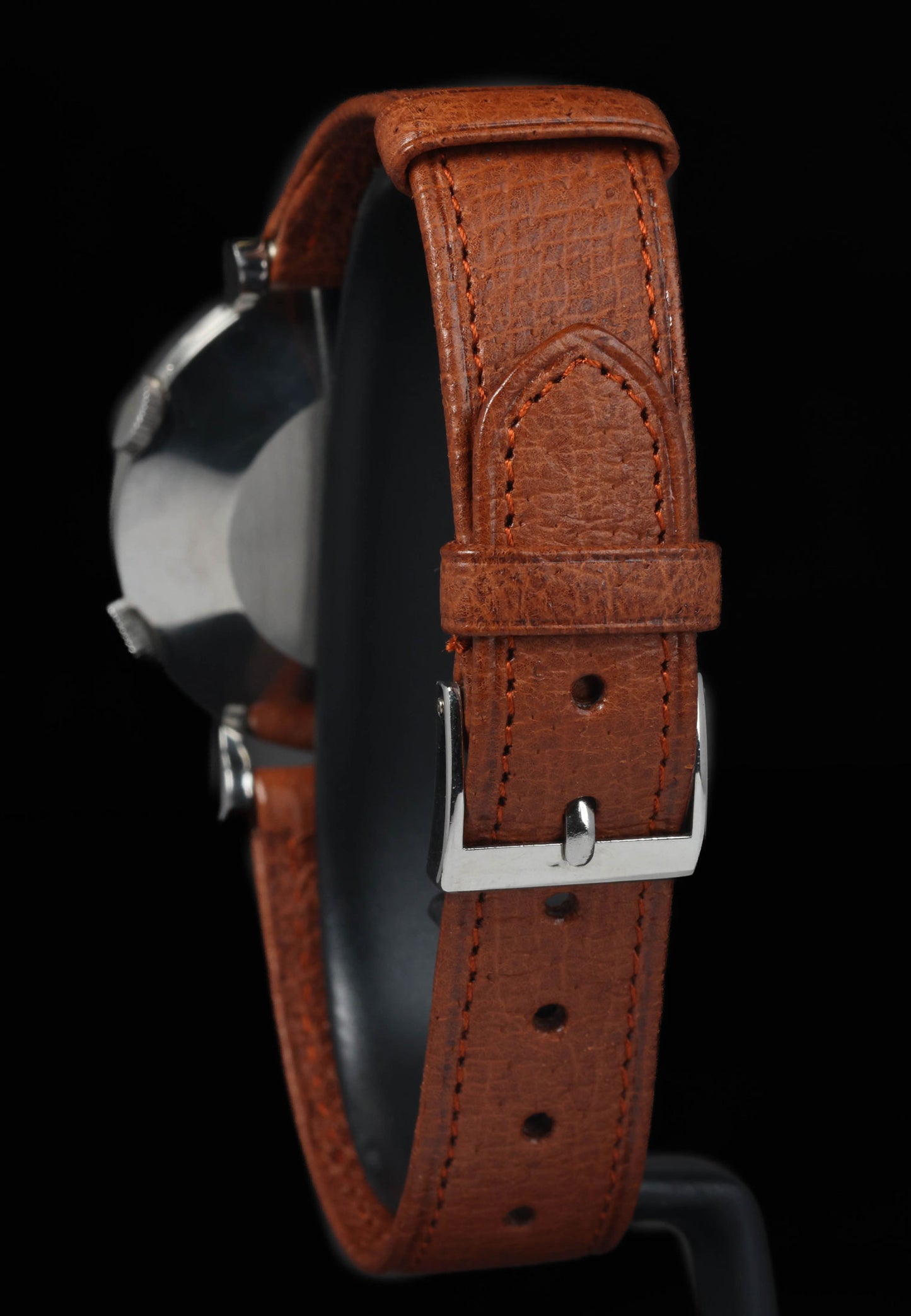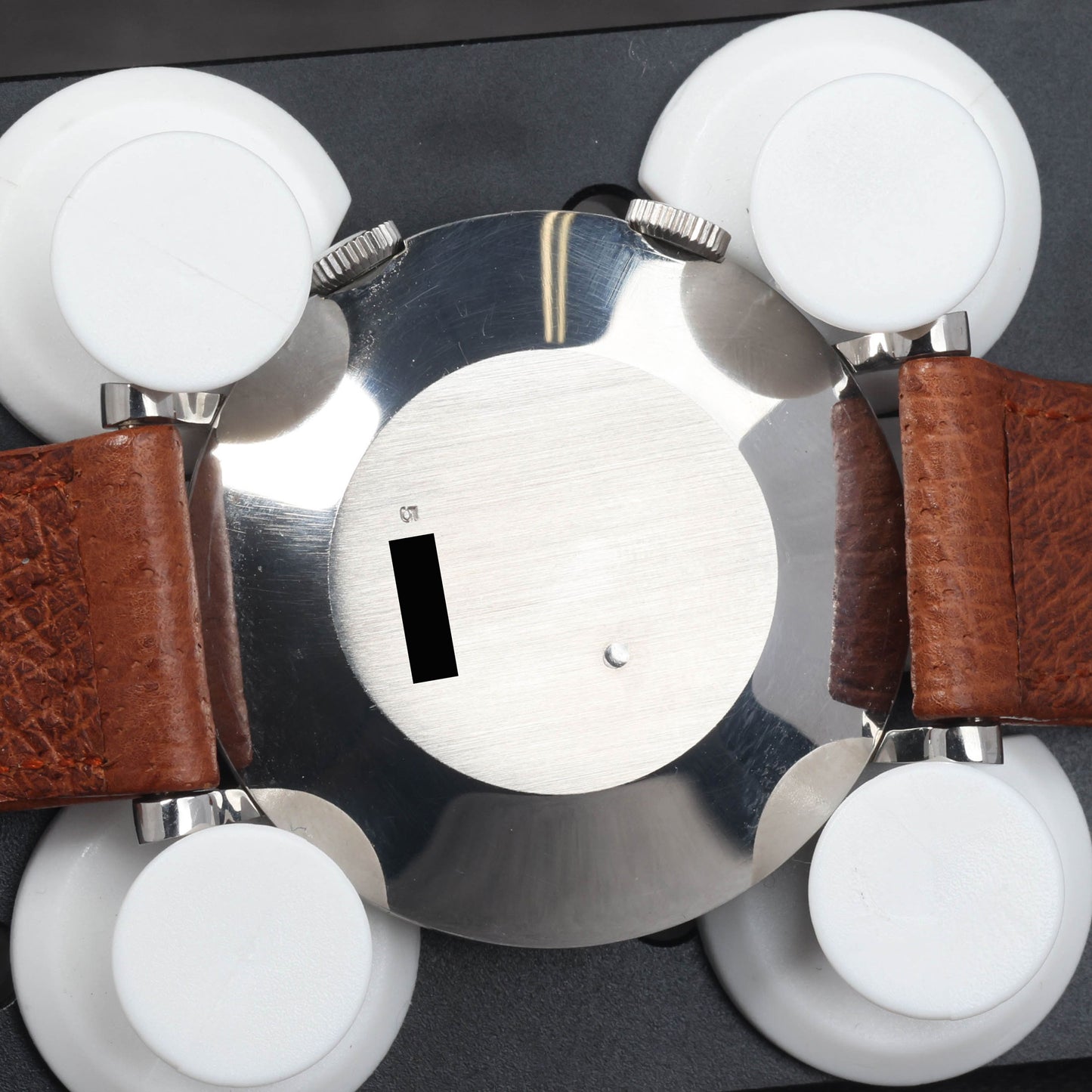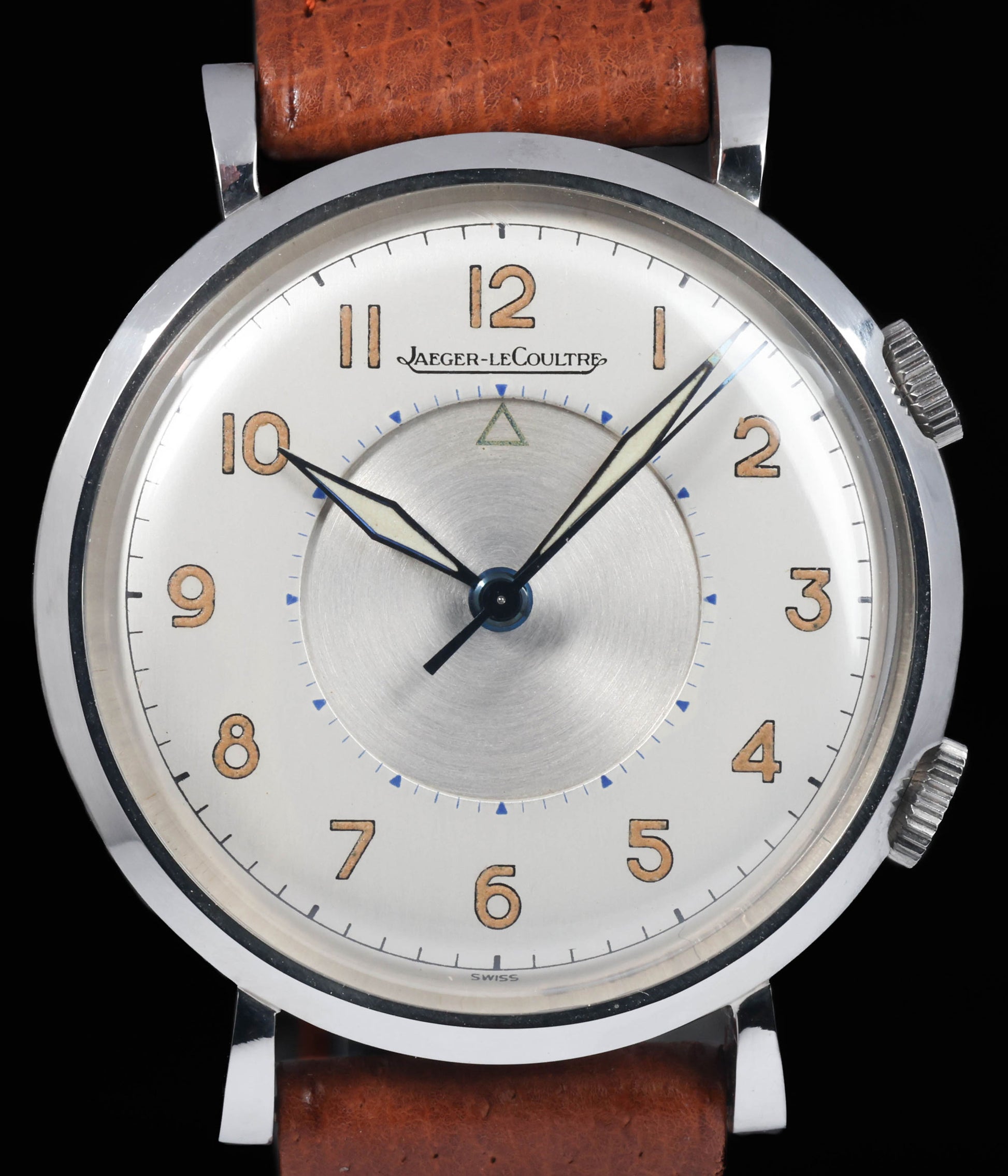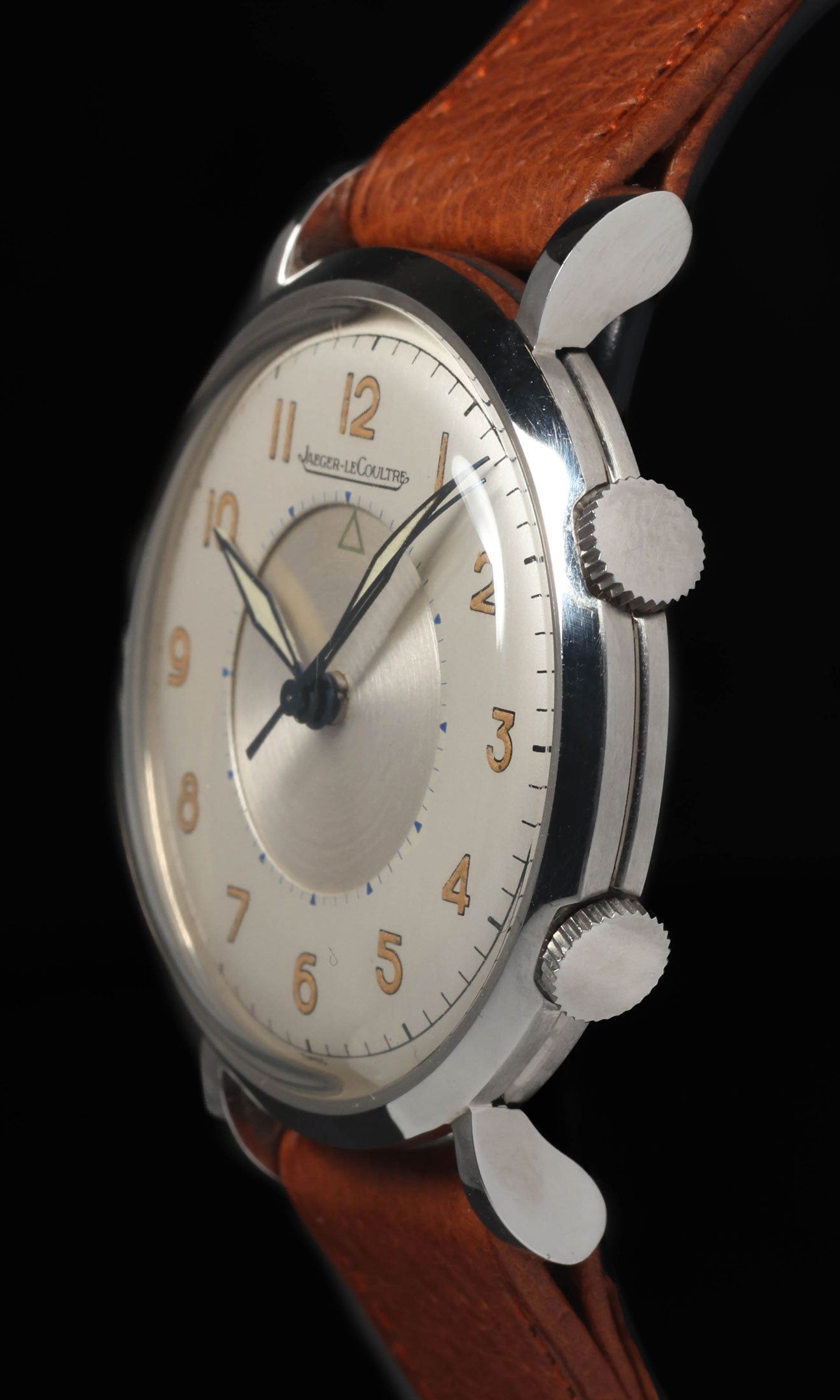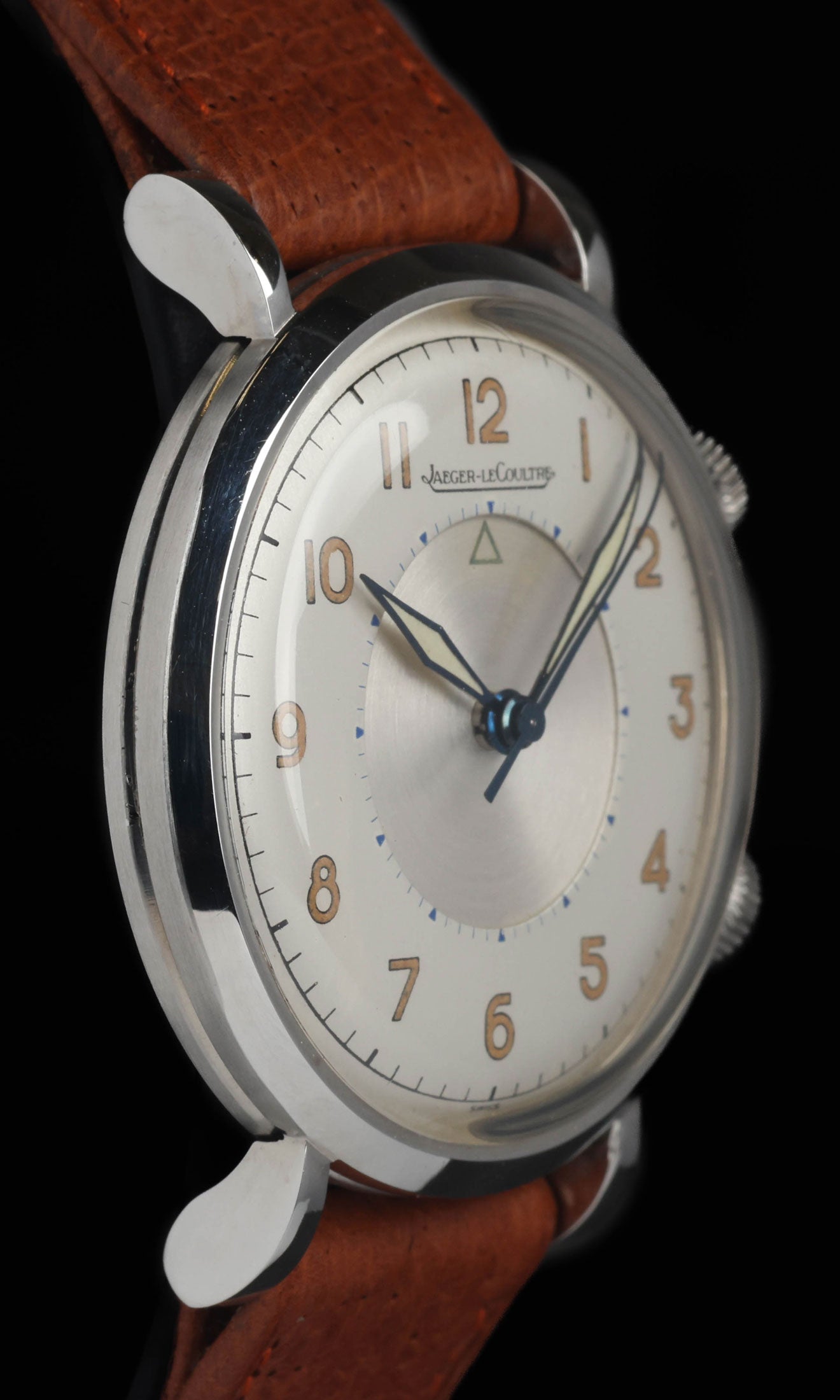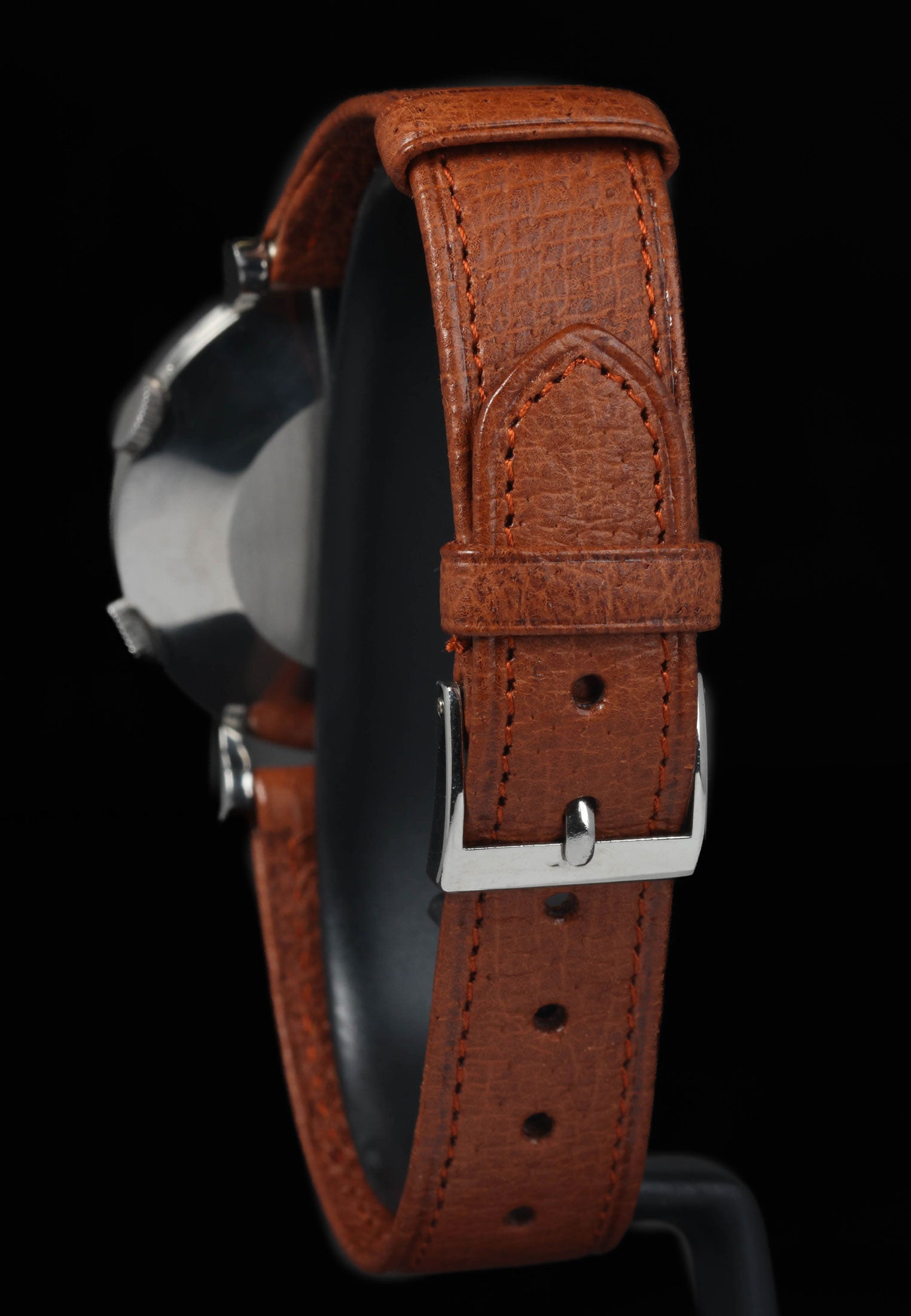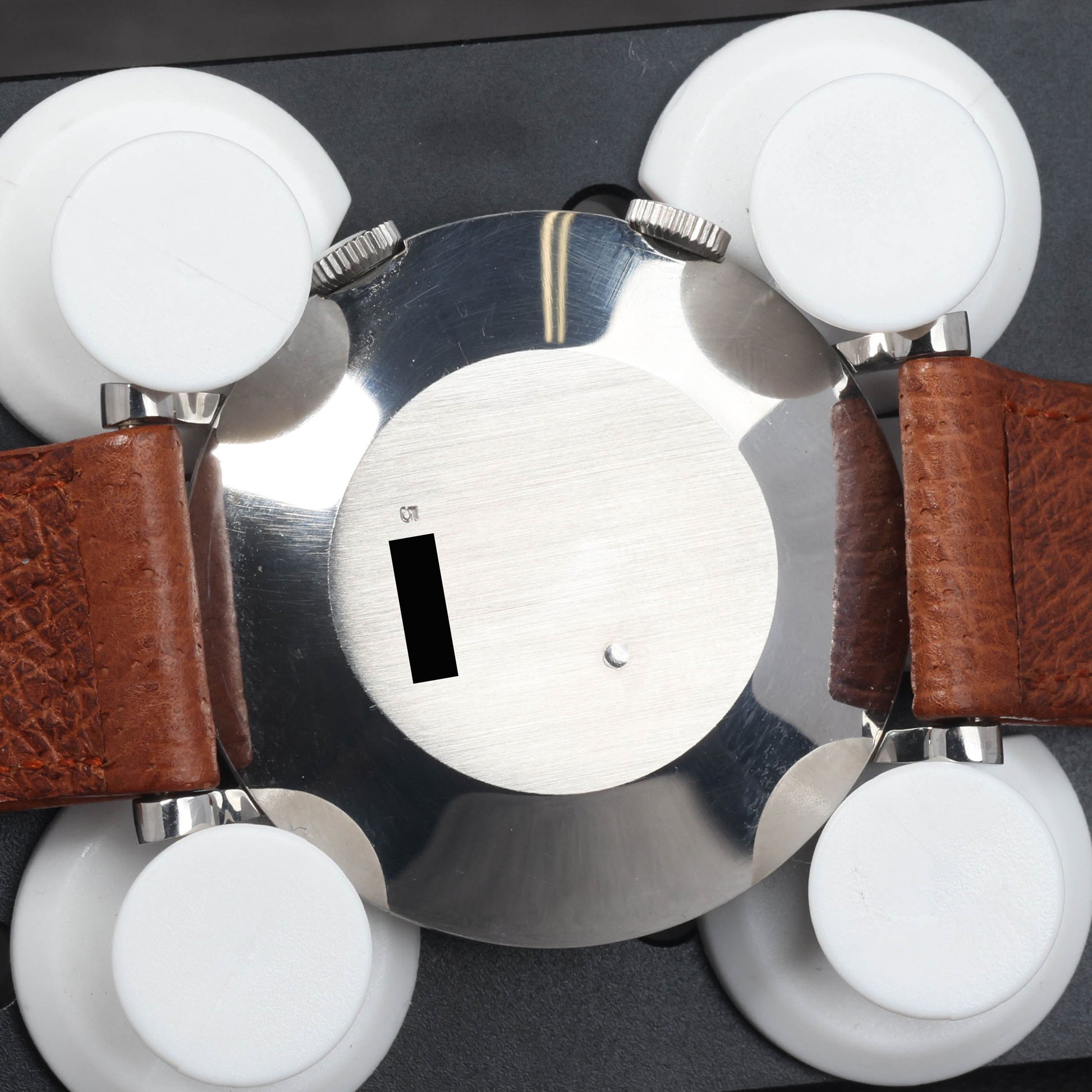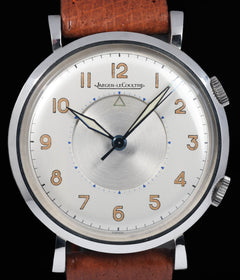Crown Vintage
Jaeger-LeCoultre Memovox Ref. 3151 35mm Circa 1950s
Jaeger-LeCoultre Memovox Ref. 3151 35mm Circa 1950s
Couldn't load pickup availability
Jaeger-LeCoultre Memovox Ref. 3151 35mm Circa 1950s
The case of this Jaeger-LeCoultre Memovox 3151 remains in great vintage condition, showing very minimal wear and preserving its original definition with little to no evidence of polishing. The lines of the lugs and case profile are sharp, highlighting its well-kept state. Our watchmaker is currently verifying whether the dial and hands retain their original radium lume or if they were relumed at some stage. The luminous material continues to glow faintly. Overall, the watch presents as an excellent vintage example of the Memovox, with an honest case and period-appropriate dial and hands awaiting final lume assessment.
Share
Why we love this watch
Why we love this watch
Jaeger-LeCoultre Memovox Reference 3151
Where the 3151 Sits in Memovox History
The Memovox story begins at the turn of the 1950s, when Jaeger-LeCoultre developed a wrist-worn mechanical alarm to rival the Vulcain Cricket. The result debuted at Basel in 1950/51 as the “Wrist Alarm,” soon rebranded “Memovox.” Early pieces were manually wound and used the in-house calibre 489, the first JLC alarm calibre with separate barrels/crowns for timekeeping and alarm. Reference 3151 is one of these first-generation Memovox models and belongs to the earliest production years of the line.
The Movement: Calibre P489/1
Inside the 3151 is Jaeger-LeCoultre’s P489/1, a refinement of the original 489. It is a manual-wind movement with two distinct energy sources: one barrel for the going train and one for the alarm. The lower crown (around 4 o’clock) winds/sets the time; the upper crown (around 2 o’clock) winds the alarm spring and rotates the central alarm disc. When the set time arrives, a hammer vibrates against a shaped boss on the back plate, producing the trademark buzzing alert. The P489/1 remained in production through the 1950s before the bumper-automatic Cal. 815 (1956) and the date-equipped Cal. 825 (1959) took the Memovox into its automatic era.
Case, Crowns, Dimensions
Reference 3151 cases appear in stainless steel and in precious-metal executions, typically with a snap-on back and the Memovox’s signature dual-crown layout. Period documentation and auction archives place the diameter in the mid-30s—approximately 34–35 mm—squarely in line with dress watches of the day.
Dials and the Rotating Alarm Disc
The 3151 dial architecture is classic early Memovox: a fixed outer dial with applied markers and minute track, and a rotating inner disc with an arrow or triangle to indicate the alarm time. Surviving examples show a range of period-correct executions—clean silvered dials with dart markers, mixes of Arabic numerals and batons, and non-luminous dauphine or alpha hands—consistent with JLC’s wide 1950s catalog.
How to Use It
Operation is intuitive once the twin barrels are understood. Wind the lower crown to power the timekeeping barrel, set the hands as normal, then wind the upper crown to tension the alarm spring. Pulling/turning the upper crown rotates the central disc; align its arrow with the desired time on the chapter ring. At the appointed time the hammer vibrates rapidly, delivering a noticeable buzz rather than a chime—by design, so it can be felt as well as heard during everyday wear.
Year, Serials, and Period
Archival-backed auction entries place 3151 production in the early 1950s—examples documented with extracts from the archives include pieces produced in 1951. Contemporary vintage listings and dealer research cluster 3151 examples circa 1950–1956, which aligns with the 489/1 production window before JLC moved Memovox to the automatic 815/825 platform late in the decade.
US-Market and Co-Signed Pieces
Like other mid-century JLCs, the Memovox 3151 appears with “LeCoultre” signatures for the American market, and a small number were retailed and co-signed by houses such as Cartier. These co-signed dials and period boxes are documented by specialist dealers and provide a window into post-war retail partnerships. They’re uncommon and reflect the reference’s reach beyond the European market.
What the 3151 Is—and Isn’t
The 3151 is not the chunky sports alarm of later decades; it is a mid-century dress-alarm with practical intent. The snap-back case and acrylic crystal suit daily scheduling and travel, not immersion. Its purpose is clear: provide a tactile, audible reminder for meetings, wake-ups, trains, or parking meters—the scenarios JLC advertised at the time. The form is restrained; the function is what sets it apart.
Design Language in Detail
Case geometry on the 3151 ranges from simple straight lugs to more sculptural profiles depending on sub-variant, but the visual constant is the two-level dial with a prominent central disc. Many period dials carry sunburst finishing on the disc to differentiate it from the main dial, and the printing is characteristically crisp, with a practical minute track to make aligning the alarm pointer precise. Dauphine hands were common, and lume was not universal—non-luminous executions are well attested in period catalogs.
Why the Early Manual-Wind Matters
From a technical standpoint, the 3151 showcases JLC’s solution to a wrist-worn mechanical reminder: separate power for the alarm so the alert won’t steal amplitude from timekeeping. That seemingly small choice is the foundation for every later Memovox; the automatic calibres kept the dual-barrel concept while improving winding efficiency and convenience. Historically, the 3151 represents the moment when a discreet dress watch gained a genuinely useful complication for modern life.
The Leap to Automatic—and What Came After
By the mid-1950s JLC introduced the bumper-automatic Cal. 815, the first self-winding wrist-alarm; three years later came the Cal. 825 with a date module. These movements powered an expanded family—calendar Memovoxes such as the E855 and specialized alarms like the Deep Sea Alarm (E857)—and remained the backbone until full-rotor, high-beat alarm calibres arrived in the late 1960s. The progression underscores how quickly the concept evolved once the manual architecture proved itself.
Wearing and Servicing a 3151 Today
The alarm’s energy comes from a separate spring; if the buzz grows weak while timekeeping remains fine, the alarm barrel may need attention independent of the going train. The hammer and its striking surface must be clean and correctly adjusted to avoid a feeble rattle. Period crowns vary; some early pieces used unsigned crowns, and replacements are common after decades of service. Sourcing correct P489/1 parts is feasible but requires a watchmaker comfortable with mid-century JLC; small differences exist between 489 and 489/1 components.
Reference Points in the Market
Auction records, dealer research and contemporary listings collectively sketch the profile of 3151 examples: steel and gold cases around 34–35 mm; two-tone or silvered dials with central alarm discs; P489/1 inside; and period boxes or retailer co-signatures on the rarest survivors. Extracts from the archives appear with some auctioned pieces, helping to pin production to the early 1950s. These independent data points, while not a factory reference sheet, triangulate the model’s specification and era well.
Why Reference 3151 Endures
The appeal is straightforward: it is the Memovox in its most original form. The design is restrained; the engineering is clever; the purpose is still useful. Later Memovoxes brought date windows, higher beat rates and sportier cases, but the 3151 preserves the clarity of the concept—two crowns, two barrels, one clear buzz at the chosen time. That clarity is why it continues to anchor Memovox scholarship and why it remains a reference point for anyone interested in mechanical alarms.
Key Facts at a Glance
Reference: 3151; movement: JLC P489/1 manual-wind alarm with separate barrels; case: stainless steel or precious-metal, snap-back, dual crowns; size: ~34–35 mm; dial: fixed outer chapter and rotating central alarm disc; period: early 1950s; successors: Cal. 815 (1956, automatic, no date), Cal. 825 (1959, automatic with date).
Further Reading and Sources
Wind Vintage’s collector’s guide to the 3151 provides period catalog scans, dial variants and movement details specific to this reference. The Bonhams archive confirms a 3151 produced in 1951 with P489/1 and dual crowns. Hodinkee’s and Watchonista’s historical overviews cover the 489→815→825 progression and the origin of the Memovox name and concept. Strictly Vintage’s catalog essay fills in late-1950s context. For co-signed retail examples, see Cartier-signed 3151s documented by specialist dealers.
Case & Bracelet
Case & Bracelet
- Case in great vintage condition.
- Very minimal wear visible.
- Case little to no polishing
Dial & Hands
Dial & Hands
Our watchmaker is currently verifying whether the dial and hands retain their original radium lume or if they were relumed at some stage. The luminous material continues to glow faintly.
Warranty & Condition
Warranty & Condition
Crown Vintage Watches provides a minimum 3-month mechanical warranty on pre-owned watches, from the date of purchase.
The warranty covers mechanical defects only.
The warranty does not cover damages such as scratches, finish, crystals, glass, straps (leather, fabric or rubber damage due to wear and tear), damage resulting from wear under conditions exceeding the watch manufacturer’s water resistance limitations, and damage due to physical and or accidental abuse.
Please note, water resistance is neither tested nor guaranteed.
Shipping and insurance costs for warranty returns to us must be covered by the customer. Returns must be shipped via traceable courier. Return shipment must be pre-paid and fully insured. Collect shipping will be refused. In case of loss or damages, the customer is liable.
Our Pledge
At Crown Vintage Watches, we stand by the authenticity of every product we sell. For added peace of mind, customers are welcome to have items independently authenticated at their own expense.
Condition
Due to the nature of vintage timepieces, all watches are sold as is. We will accurately describe the current condition and working order of all watches we sell to the best of our ability.
Shipping & Refund
Shipping & Refund
